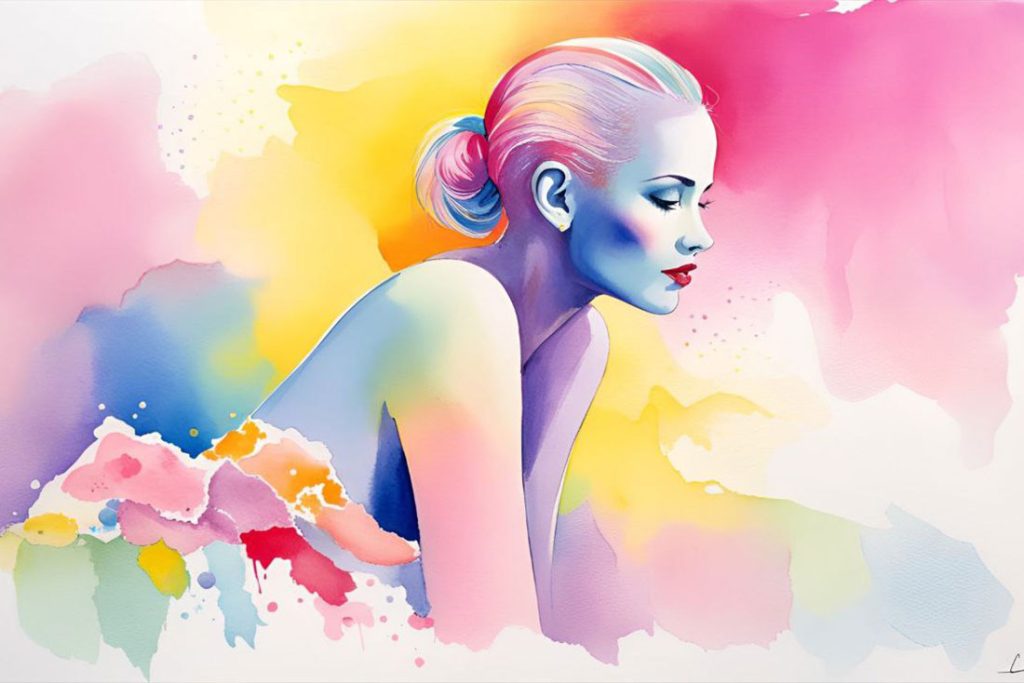Element 5 of Hair Design: Haircolor
Haircolor is more than just a shade choice; it’s a cornerstone of comprehensive hair design. Not only does it dramatically influence visual aesthetics, but it also holds immense psychological power, dictating perceptions and emotions about a hairstyle. Dive into the intricate interplay of haircolor in hair design and discover the methods and psychology behind these colorful choices.

The Power of Haircolor in Design
When you think about hair design, often the cut, style, and texture come to mind. However, haircolor is a game-changer. It’s not just about choosing a shade that complements the client’s skin tone or eyes. It’s about understanding how color can shape, define, and transform a design.
1. Defining Texture and Line
Haircolor can vividly accentuate the texture of a hairstyle. Whether the hair is straight, wavy, or curly, the right shade or combination of hues can enhance the textural elements, making them pop or subtly blending them into the background.
2. Volume Play
Haircolor has an innate ability to manipulate volume. By skillfully placing different hues and tones, hairstylists can make certain areas of the design look voluminous, while other areas seem more muted and close to the scalp. The strategic interplay of light and dark shades crafts an illusion of depth and dimension.
Crafting Dimension with Color
Every head of hair can be seen as a canvas, with the potential for an artful splash of color. By understanding the principles of color theory and human perception:
- Warm Colors Elevate: Shades that are light and warm, such as golden blondes or vibrant reds, inherently seem to expand, creating an illusion of more volume. They act as the ‘highlights’ in a painting, drawing attention and adding breadth.
- Cool Colors Recede: On the other side of the spectrum, cool and dark colors like deep blues, purples, or ash browns tend to recede. When strategically placed, they can give an illusion of less volume, sculpting and contouring the hair design.
- Interplay is Key: The magic truly happens when these warm and cool shades are intertwined skillfully. The juxtaposition creates depth, dimension, and a multi-faceted appeal that’s hard to take one’s eyes off.
Drawing Lines with Color
Haircolor is an artist’s brush, drawing lines that guide the observer’s gaze.
- Highlighting the Highlights: Since the human eye naturally gravitates towards lighter shades, bright highlights can dictate directionality. Imagine a waterfall of golden highlights cascading from the crown to the tips or a fringe lit up with sun-kissed hues — the eye naturally follows these light paths, crafting a visual story.
- Bold Strokes for Dramatic Effects: While subtle shading creates depth, bold strokes of color create drama. Whether it’s a stark contrast like a jet-black bob with platinum blonde underlayers or neon streaks in a brunette mane, these deliberate lines become the focal points, adding character and edge.
Conclusion
Haircolor in hair design is both an art and a science. While the aesthetics dictate the overall look and feel, the underlying principles of color theory, perception, and design intricacies drive the decisions. For hairstylists, understanding and harnessing the power of haircolor can elevate their craft, turning ordinary designs into masterpieces. And for clients, being open to the transformative power of color can open up a world of possibilities, where hair becomes a canvas for self-expression.







